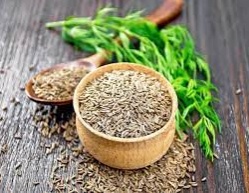Important Facts For Prelims
Unprecedented Rise in Jeera Prices
- 22 Jun 2023
- 3 min read
Why in News?
Over the past few months, Jeera (Cumin) prices have experienced an unprecedented surge.
- The primary reason for the price surge is the significant imbalance between the supply of jeera and its demand. The arrivals of jeera in the market have been considerably lower than the demand, leading to a scarcity of the spice.
What are the Key points Related to Jeera?
- About:
- Jeera is an aromatic seed that enhances the flavor of Indian dishes. It is one of the important spices & condiments, widely used for culinary as well as medicinal purposes.
- Jeera is reported to have originated from the Mediterranean to India. Cumin was known to the Egyptians 5,000 years ago and it was found in the pyramids.
- Jeera is an aromatic seed that enhances the flavor of Indian dishes. It is one of the important spices & condiments, widely used for culinary as well as medicinal purposes.
- Importance:
- The economically important part of the plant is the dried fruit. It is used as a condiment in various cuisines of different cultures either as whole or in powdered form.
- Cumin oil is reported to have antibacterial activity. It is used in veterinary medicines and various other industries.
- Climate and Cultivation:
- Jeera grows well in both tropical and sub-tropical climate and it comes up well in all types of soils, but well drained sandy loam soils are best suited.
- Jeera cultivation is highly sensitive to weather conditions. It requires a moderately cool and dry climate without humidity, which limits cultivation to specific regions in Gujarat and Rajasthan.
- Unjha, situated in the heart of India's jeera cultivation belt in Gujarat, has emerged as the primary market setting the prices for the crop.
- Gujarat is the largest producer of jeera in the country.
- It is Rabi Crop, sown in October to November and harvested in February and March.
- Major Producers:
- India dominates global jeera production, accounting for approximately 70% of the world's output.
- Other countries such as Syria, Turkey, UAE, and Iran make up the remaining 30%.
- Production disruptions caused by civil war and natural disasters in these countries have further highlighted India's significance as a major producer.





